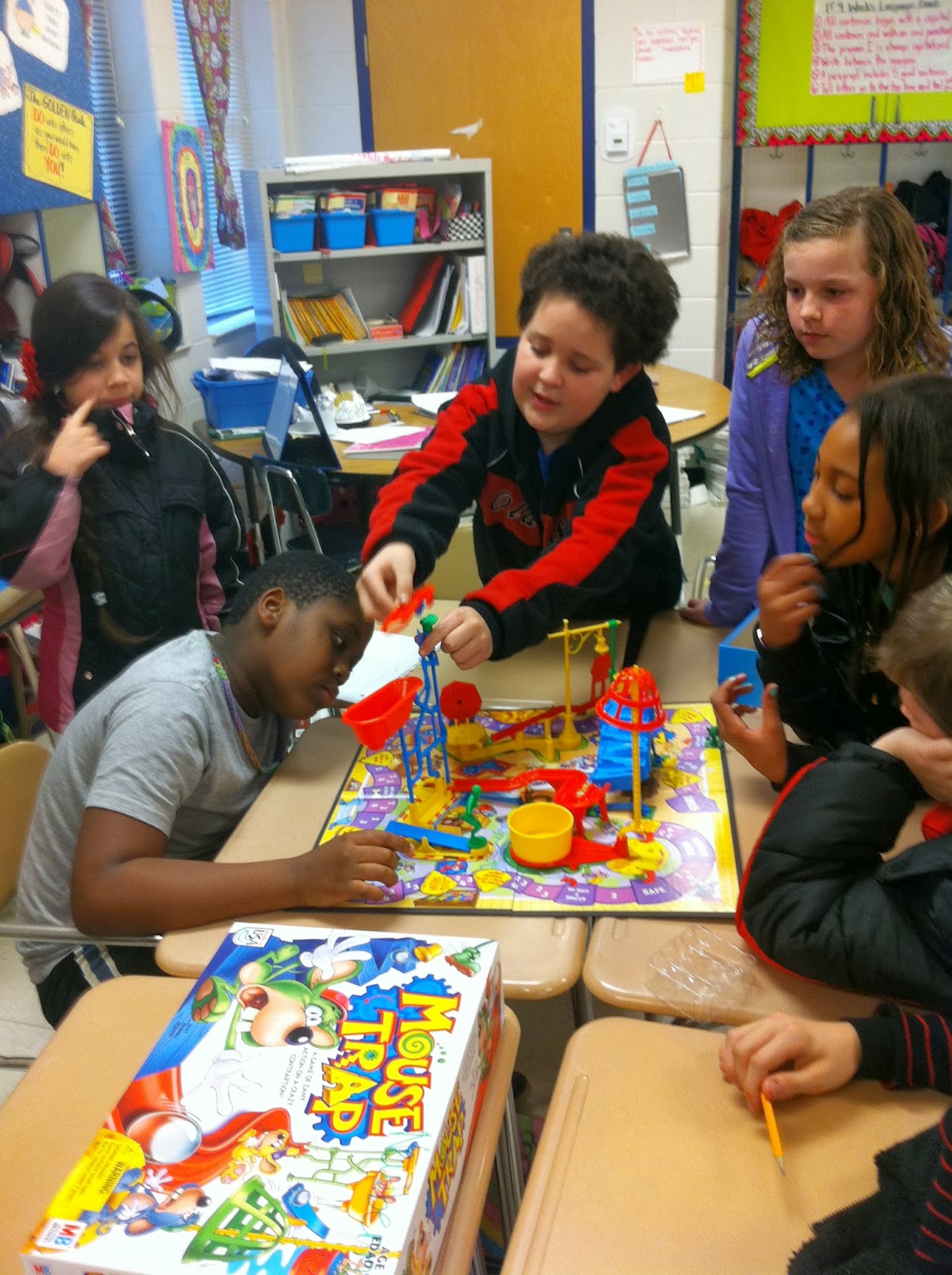:)
Ok, they weren't REAL mice--we just played the game mouse trap! (If they were real mice, my students would have seen a WHOLE new side to Mrs. Newberry!)
To begin, I taught a lesson on mechanical energy. The students took notes from a PowerPoint presentation.
Mechanical energy: the total energy of an object due to its motion and position (Also known as the total of all the potential and kinetic energy in an object)
My students then demonstrated mechanical energy by playing the board game, "Mouse Trap". I bought one game, and then borrowed two more so that more students could play. They were in groups of about 6 or 7.
I took many pictures!
One of the cool things about this lesson was that it really showed me leadership qualities of students that I had never seen before. All I did was show them the instruction manual, and they had to figure out how to put it together and make the contraption work. They had to SYNERGIZE! This was a very fun day in Science class! Here are some videos of groups who successfully displayed mechanical energy through their contraption:














.jpg)


